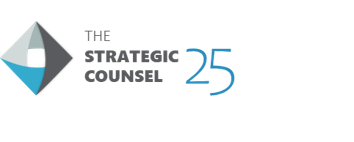



Overview of Groups
| LOCATION | GROUP | LANGUAGE | DATE | TIME (EST) | GROUP COMPOSITION | NUMBER OF PARTICIPANTS |
|---|---|---|---|---|---|---|
| Winnipeg | 1 | English | June 2 | 7:00-9:00 pm | People Experiencing COVID Fatigue/Exhibiting Riskier Behaviours/COVID-19 Hot Spot | 7 |
| Hamilton | 2 | English | June 3 | 6:00-8:00 pm | Non-homeowners looking to purchase in next 5 years | 8 |
| Nova Scotia | 3 | English | June 8 | 5:00-7:00 pm | Parents of Children aged 12-17 | 7 |
| Lower Mainland B.C. | 4 | English | June 9 | 9:00-11:00 pm | Non-homeowners looking to purchase in next 5 years | 8 |
| Outaouais Region Quebec | 5 | French | June 10 | 6:00-8:00 pm | Vaccine Hesitant | 4 |
| Windsor | 6 | English | June 15 | 6:00-8:00 pm | Gen Pop | 8 |
| Greater Montreal Area (GMA) | 7 | French | June 16 | 6:00-8:00 pm | Non-homeowners looking to purchase in next 5 years | 6 |
| Mid-size Centres Prairies | 8 | English | June 17 | 7:00-9:00 pm | Vaccine Rejecters | 8 |
| Saguenay and Lac-St-Jean Region Quebec | 9 | French | June 22 | 6:00-8:00 pm | Gen Pop | 8 |
| City of Toronto and York Region | 10 | English | June 23 | 6:00-8:00 pm | Parents of children aged 12-17 | 6 |
| Atlantic Canada | 11 | English | June 24 | 5:00-7:00 pm | Young Adults aged 18-30 | 8 |
| Calgary | 12 | English | June 29 | 8:00-10:00 pm | Parents of Children aged 12-17 | 7 |
| Parents of Children aged 12-17 | 85 | |||||

The above concept had three parts. First, there is a ‘PPT slide’ which has a white banner across the top that features the Government of Canada wordmark on the right-hand side and the Government of Canada logo on the left hand side. Below, there is a purple filter over an image of a wind farm. On the left-hand side of the image, there is white text that reads ‘Lorem | ps Building a strong, competitive and dynamic Prairie Region.’ Below the text, there are turquoise, yellow, pink, and dark purple arrows pointing to the right, and extending into a long, light purple arrow. Below the arrows, there is white text reading ‘CANADA.CA/PRAIRIES.’ While slightly covered by another concept, there is a circular symbol with pink, yellow and turquoise stripes overlaying one another and a white arrow slightly off center, to the left, pointing up and to the right.
Secondly, there is a ‘Shareable’ concept covering the bottom right hand corner of the ‘PPT slide.’ The shareable is white, with the Government of Canada wordmark and logo at the top. Below, in purple font, text reads ‘Lorem | ps.’ Below in smaller grey font, text reads ‘Building a strong, competitive and dynamic prairie region by focusing on business development, innovation and community economic development.’ Below the text, there are turquoise, yellow, pink, and dark purple arrows pointing to the right, and extending into a long, light grey arrow. Below the arrows, there is grey text reading ‘CANADA.CA/PRAIRIES.’ On the right-hand side of the image, there is a circular symbol composed of overlaid pink, yellow, purple and turquoise stripes with a white arrow slightly off center, to the left, pointing up and to the right.
Finally, there is a ‘Web banner’ that features images of a wind farm, a city street, and a bridge, covered in turquoise, yellow and pink filters respectively. On the right-hand side of the image, there is a small circular symbol composed of overlaid pink, yellow, purple and turquoise strips with a white arrow slightly off center and to the left pointing up and to the right. The symbol is contained within a larger white arrow pointing up and to the right.

The above concept has three parts. First, there is a ‘PPT slide’ which has a white banner across the top that features the Government of Canada wordmark in the right hand corner and the Government of Canada logo in the left hand corner. Below, there is a light grey pattern covering the rest of the slide. On the left-hand slide, there is a letter P shape that contains an image of the downtown Calgary skyline. There is also an orange + symbol on the top, right side of the image. To the right, there is text reading ‘Lorem | ps Building a strong, competitive and dynamic…’ in grey font, except the word ’Lorem’ is in dark green. Below there is an orange line, and below the line, there is grey font reading ‘Canada.ca/.’ The bottom right hand corner of the ‘PPT slide’ is obstructed by the image of the ‘Shareable’ concept.
Secondly, there is a ‘Shareable’ concept. The shareable is white, with the Government of Canada wordmark and logo at the top. On the left-hand slide, there is a letter P shape that contains an image of a woman sitting in a canoe. There is also an orange + symbol on the top, right side of the image. To the right, in grey font, text reads ‘Lorem | ps.’ Below in smaller grey font, text reads ‘Building a strong, competitive and dynamic prairie region by focusing on business development, innovation and community economic development’ although the word ‘Lorem’ is in dark green font. Below the text, there is an orange line. Below the line, there is grey text reading ‘Canada.ca/prairies.’
Finally, there is a ‘Web banner’ that features images of a wind farm, a city street, a bridge, and the downtown Calgary skyline, each image is rounded on the right-hand side. The far right-hand side of the web banner is white with a light grey pattern and four + symbols arranged in a circle, coloured orange, green, dark green and light green.
| GROUP | DATE | TIME (EDT) | TIME (LOCAL) | LOCATION | COMPOSITION | MODERATOR |
|---|---|---|---|---|---|---|
| 1 | Wed., June 2nd | 7:00-9:00 | 6:00-8:00 (CDT) | Winnipeg | People Experiencing COVID-19 Fatigue/Exhibiting Riskier Behaviours | TBW |
| 2 | Thurs., June 3rd | 6:00-8:00 | 6:00-8:00 (EDT) | Hamilton | Non-homeowners Looking to Purchase in Next 5 Years | DN |
| 3 | Tues., June 8th | 5:00-7:00 | 6:00-8:00 (ADT) | Nova Scotia | Parents of Children, aged 12-17 | DN |
| 4 | Wed., June 9th | 9:00-11:00 | 6:00-8:00 (PDT) | Lower Mainland B.C. | Non-homeowners Looking to Purchase in Next 5 Years | TBW |
| 6 | Tues., June 15th | 6:00-8:00 | 6:00-8:00 (EDT) | Windsor | General Population | TBW |
| 8 | Thurs., June 17th | 7:00-9:00 | 5:00-7:00 (CST) 6:00-8:00 (CDT) | Mid-size Centres Prairies | Vaccine Rejecters | TBW |
| 10 | Wed., June 23rd | 6:00-8:00 | 6:00-8:00 (EDT) | City of Toronto/York Region | Parents of Children, aged 12-17 | DN |
| 11 | Thurs., June 24th | 5:00-7:00 | 6:00-8:00 (ADT) 6:30-8:30 (NDT) | Atlantic Canada | Young Adults, aged 18-30 | TBW |
| 12 | Tues., June 29th | 8:00-10:00 | 6:00-8:00 (MDT) | Calgary | Parents of Children, aged 12-17 | TBW |
| LOCATION | CITIES | |
|---|---|---|
| Winnipeg | Winnipeg PARTICIPANTS SHOULD RESIDE IN THE ABOVE-NOTED CENTER PROPER. |
CONTINUE - GROUP 1 |
| Hamilton | Hamilton PARTICIPANTS SHOULD RESIDE IN THE ABOVE-NOTED CENTER PROPER. |
CONTINUE - GROUP 2 |
| Nova Scotia | Cities include: Halifax, Dartmouth, Cape Breton – Sydney, Truro, New Glasgow,, Glace Bay, Sydney Mines, Kentville, Amherst, Bridgewater, New Waterford, Yarmouth, Windsor ENSURE A GOOD MIX OF CITIES ACROSS THE REGION. NO MORE THAN TWO PER CITY. INCLUDE THOSE RESIDING IN LARGER AND SMALLER COMMUNITIES. |
CONTINUE - GROUP 3 |
| Lower Mainland B.C. | Cities include: Vancouver, Abbotsford, Burnaby, Coquitlam, Richmond, Surrey, Delta, Langley, White Rock, Chilliwack, Mission Hope, Maple Ridge, New Westminster, North Vancouver, Port Coquitlam, Port Moody ENSURE A GOOD MIX OF CITIES ACROSS THE REGION. NO MORE THAN TWO PER CITY. INCLUDE THOSE RESIDING IN LARGER AND SMALLER COMMUNITIES. |
CONTINUE - GROUP 4 |
| Windsor | Windsor
PARTICIPANTS SHOULD RESIDE IN THE ABOVE-NOTED CENTER PROPER. |
CONTINUE - GROUP 6 |
| Mid-size Centres Prairies | Cities include:
Manitoba: Steinbach, Thompson, Portage la Prairie, Winkler, Selkirk, Morden, Dauphin Saskatchewan: Prince Albert, Moose Jaw, Lloydminster, Yorkton, Swift Current, North Battleford, Estevan, Warman, Weyburn, Martensville ENSURE 4 PARTICIPANTS FROM EACH PROVINCE. NO MORE THAN 1 PER CITY. ENSURE A GOOD MIX OF CITIES ACROSS THE REGION. |
CONTINUE - GROUP 8 |
| City of Toronto/York Region | Cities could include: City of Toronto York Region: Markham, Vaughan, Richmond Hill, Newmarket, Aurora, King City, Nobleton ENSURE 4 FROM CITY OF TORONTO AND 4 FROM YORK REGION. FOR YORK REGION, INCLUDE THOSE RESIDING IN LARGER AND SMALLER COMMUNITIES AND NO MORE THAN 1 PER CITY. |
CONTINUE - GROUP 9 |
| Atlantic Canada | Cities could include (but are not limited to): NS: Halifax, Dartmouth, Cape Breton-Sydney NB: Moncton, Saint John, Fredericton, Dieppe, Miramichi, Edmundston PEI: Charlottetown, Summerside N&L: St. John’s, Conception Bay, Mount Pearl, Corner Brook ENSURE 2 PARTICIPANTS FROM EACH PROVINCE. ENSURE A GOOD MIX OF CITIES WITHIN EACH PROVINCE. INCLUDE THOSE RESIDING IN LARGER AND SMALLER COMMUNITIES. NO MORE THAN 1 PER CITY. |
CONTINUE - GROUP 11 |
| Calgary | Calgary PARTICIPANTS SHOULD RESIDE IN THE ABOVE-NOTED CENTER PROPER. |
CONTINUE - GROUP 12 |
| Other | THANK AND END | |
| VOLUNTEERED Prefer not to answer | - | THANK AND END |
| Less than two years | THANK AND END |
|---|---|
| Two years or more | CONTINUE |
| Don’t know/Prefer not to answer | THANK AND END |
| Child | Age |
|---|---|
| 1 | |
| 2 | |
| 3 | |
| 4 | |
| 5 |
| Under 18 years of age | IF POSSIBLE, ASK FOR SOMEONE OVER 18 AND REINTRODUCE. OTHERWISE THANK AND END. |
|---|---|
| 18-24 | IF ATLANTIC CANADA = GROUP 11
ALL OTHER LOCATIONS, CONTINUE |
| 25-30 | |
| 31-44 | IF ATLANTIC CANADA = THANK AND END
ALL OTHER LOCATIONS, CONTINUE |
| 45-54 | |
| 55+ | |
| VOLUNTEERED Prefer not to answer | THANK AND END |
| Male | CONTINUE |
|---|---|
| Female | CONTINUE |
| GROUPE | DATE | HEURE (DE L’EST) | LIEU | COMPOSITION DU GROUPE | MODÉRATEUR |
|---|---|---|---|---|---|
| 5 | 10 juin | 18 h-20 h | Région de l’Outaouais | Personnes qui hésiteraient à se faire vacciner | M. Proulx |
| 7 | 16 juin | 18 h-20 h | Grande région de Montréal – y compris la ville de Montréal | Non-propriétaires souhaitant acheter un logement d’ici cinq ans | M. Proulx |
| 9 | 22 juin | 18 h-20 h | Région du Saguenay-Lac-St-Jean | Population générale | M. Proulx |
| LIEU | VILLES | |
|---|---|---|
| Région de l’Outaouais | Ces villes peuvent notamment comprendre : Gatineau, Les Collines-de-l’Outaouais : Val-des-Monts, Cantley, Le Pêche, Chelsea, Pontiac, L'Ange-Gardien, Notre-Dame-de-la-Salette ASSURER UNE BONNE REPRÉSENTATION DES VILLES DANS CHAQUE LIEU. |
CONTINUER - GROUPE 5 |
| Grande région de Montréal (GRM) – y compris la ville de Montréal | Les villes de la GRM peuvent notamment comprendre : Montréal, Laval, Longueuil, Terrebonne, Brossard, Saint-Jérôme, Blainville, Mirabel, Dollard-des-Ormeaux
PAS PLUS DE DEUX PARTICIPANTS DE LA VILLE DE MONTRÉAL. ASSURER UNE BONNE REPRÉSENTATION DES VILLES DANS CHAQUE LIEU. |
CONTINUER - GROUPE 7 |
| Région du Saguenay-Lac-St-Jean | Ces villes peuvent notamment comprendre : Alma, Dolbeau-Mistassini, Normandin, Roberval, Saguenay, Saint-Ambroise, Saint-Félicien, Saint-Honoré
ASSURER UNE BONNE REPRÉSENTATION DES VILLES DE LA RÉGION. PAS PLUS DE TROIS PARTICIPANTS PAR VILLE. RECRUTER DES RÉSIDENTS DE GRANDES ET DE PETITES COLLECTIVITÉS. |
CONTINUER - GROUPE 9 |
| Autre lieu | - | REMERCIER ET CONCLURE |
| RÉPONSE SPONTANÉE Préfère ne pas répondre | - | REMERCIER ET CONCLURE |
| Moins de deux ans | REMERCIER ET CONCLURE |
|---|---|
| Deux ans ou plus | CONTINUER |
| Ne sais pas/Préfère ne pas répondre | REMERCIER ET CONCLURE |
| Moins de 18 ans | SI POSSIBLE, DEMANDER À PARLER À UNE PERSONNE DE 18 ANS OU PLUS ET REFAIRE L’INTRODUCTION. SINON, REMERCIER ET CONCLURE. |
|---|---|
| 18 à 24 | CONTINUER ASSURER UNE BONNE REPRÉSENTATION DES ÂGES DANS CHAQUE GROUPE. |
| 25 à 34 | |
| 35 à 44 | |
| 45 à 54 | |
| 55 ans ou plus | |
| RÉPONSE SPONTANÉE Préfère ne pas répondre | REMERCIER ET CONCLURE |

The above concept has three parts. First, there is a ‘PPT slide’ which has a white banner across the top that features the Government of Canada wordmark on the right hand side and the Government of Canada logo on the left hand side. Below, there is a purple filter over an image of a wind farm. On the left-hand side of the image, there is white text that reads ‘Lorem | ps Building a strong, competitive and dynamic Prairie Region.’ Below the text, there are turquoise, yellow, pink, and dark purple arrows pointing to the right, and extending into a long, light purple arrow. Below the arrows, there is white text reading ‘CANADA.CA/PRAIRIES.’ While slightly covered by another concept, there is a circular symbol with pink, yellow and turquoise stripes overlaying one another and a white arrow slightly off center, to the left, pointing up and to the right.
Secondly, there is a ‘Shareable’ concept covering the bottom right hand corner of the ‘PPT slide.’ The shareable is white, with the Government of Canada wordmark and logo at the top. Below, in purple font, text reads ‘Lorem | ps.’ Below in smaller grey font, text reads ‘Building a strong, competitive and dynamic prairie region by focusing on business development, innovation and community economic development.’ Below the text, there are turquoise, yellow, pink, and dark purple arrows pointing to the right, and extending into a long, light grey arrow. Below the arrows, there is grey text reading ‘CANADA.CA/PRAIRIES.’ On the right-hand side of the image, there is a circular symbol composed of overlaid pink, yellow, purple and turquoise stripes with a white arrow slightly off center, to the left, pointing up and to the right.
Finally, there is a ‘Web banner’ that features images of a wind farm, a city street, and a bridge, covered in turquoise, yellow and pink filters respectively. On the right-hand side of the image, there is a small circular symbol composed of overlaid pink, yellow, purple and turquoise strips with a white arrow slightly off center and to the left pointing up and to the right. The symbol is contained within a larger white arrow pointing up and to the right.

The above concept has three parts. First, there is a ‘PPT slide’ which has a white banner across the top that features the Government of Canada wordmark in the right hand corner and the Government of Canada logo in the left hand corner. Below, there is a light grey pattern covering the rest of the slide. On the left-hand slide, there is a letter P shape that contains an image of the downtown Calgary skyline. There is also an orange + symbol on the top, right side of the image. To the right, there is text reading ‘Lorem | ps Building a strong, competitive and dynamic…’ in grey font, except the word ’Lorem’ is in dark green. Below there is an orange line, and below the line, there is grey font reading ‘Canada.ca/.’ The bottom right hand corner of the ‘PPT slide’ is obstructed by the image of the ‘Shareable’ concept.
Secondly, there is a ‘Shareable’ concept. The shareable is white, with the Government of Canada wordmark and logo at the top. On the left-hand slide, there is a letter P shape that contains an image of a woman sitting in a canoe. There is also an orange + symbol on the top, right side of the image. To the right, in grey font, text reads ‘Lorem | ps.’ Below in smaller grey font, text reads ‘Building a strong, competitive and dynamic prairie region by focusing on business development, innovation and community economic development’ although the word ‘Lorem’ is in dark green font. Below the text, there is an orange line. Below the line, there is grey text reading ‘Canada.ca/prairies.’
Finally, there is a ‘Web banner’ that features images of a wind farm, a city street, a bridge, and the downtown Calgary skyline, each image is rounded on the right-hand side. The far right-hand side of the web banner is white with a light grey pattern and four + symbols arranged in a circle, coloured orange, green, dark green and light green.